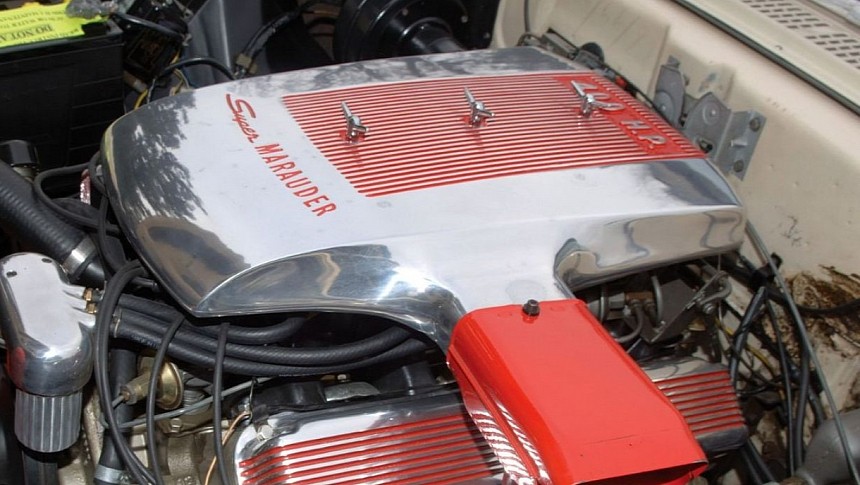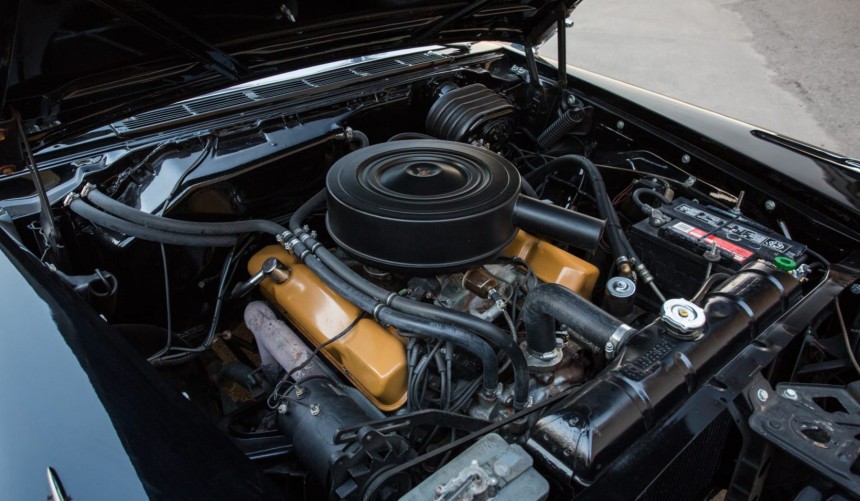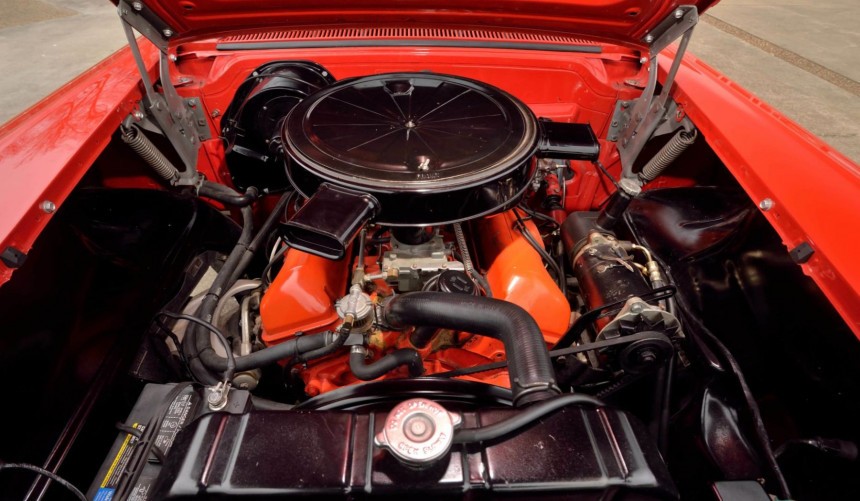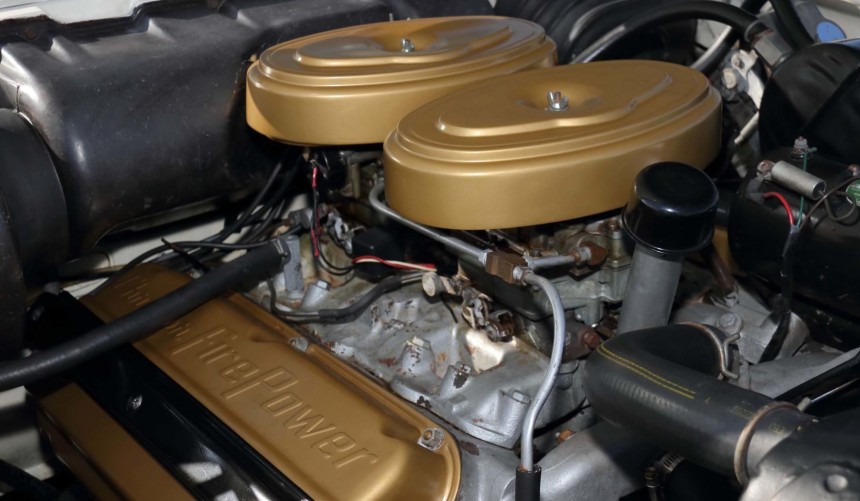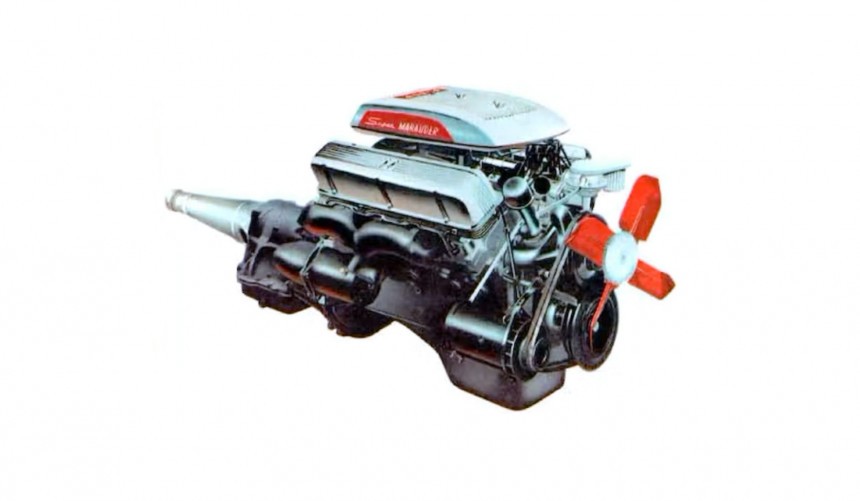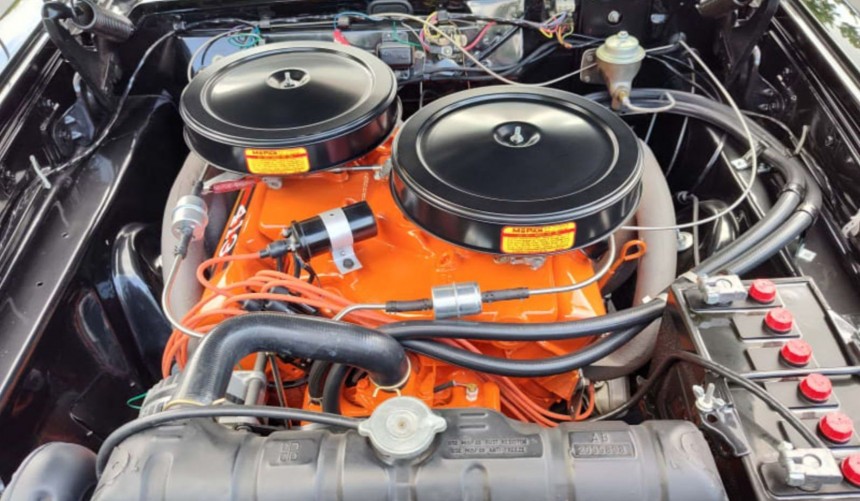Fitted into production cars during the 1950s and early 1960s, these classic V8s made high-horsepower figures before superstars like the Ford 427 FE, Chrysler 426 HEMI, or GM 454 LS6 came into being.
Though we call it "the muscle car era" or the "golden age of muscle cars," the period when those flashy, high-powered cars were the hottest items in American dealerships didn't even last a decade.
According to the vast majority of automotive historians, the muscle car era officially started in 1964 when Pontiac introduced the GTO option for the LeMans.
By 1970, the trend of stuffing a high-horsepower engine (often taken from a full-size model) into the engine bay of an intermediate, pony car, or compact chassis became a winning formula.
However, rising insurance rates, new federal emissions regulations, and a looming fuel crisis put an end to this widespread practice after the 1972 model year.
Even though that era saw the development of some of the greatest, most potent 20th-century high-performance V8s, the American automotive industry also produced some amazing V8 engines that made impressive horsepower figures, years before the official start of the muscle car era.
With its legendary 426 HEMI, the Chrysler Corporation was the performance leader during the muscle car era.
But, while the ELephant engine gets all the glory, the corporation also designed and mass-produced a series of very potent V8s during the late 1950s and early 1960s.
The first forgotten Chrysler performance V8 on our list was introduced in 1959. Called D500 (and later, Magnum) in Dodges and Golden Commando in Plymouths, the 383 (6.2 liters) was a larger bore version of its 350 and 361 B block siblings.
The larger bores allowed engineers to equip it with larger intake valves, while the relatively short stroke helped the V8 "breathe" more efficiently, which made the 383 a free-revving engine.
During its debut model year in Chrysler and DeSoto models, it wasn't particularly powerful, but that changed a year later when it was slightly upgraded.
Available on more models, including Plymouths and Dodges, the upgraded engine could produce up to 330 hp, an output that made it one of the most powerful V8s available during the 1960 model year.
Unlike all other entries on this list, the 383 transitioned to the muscle car era. It received new heads, camshaft, and exhaust manifolds from its larger 440 Magnum sibling, which enabled it to easily produce 335 hp.
Chevrolet was one of the major players in the muscle car world during the late 1960s and early 1970s, but the GM division developed a V8 that could make over 300 hp as early as 1958.
The first iteration of the W-series big blocks, the 348-ci (5.7-liter) V8, was introduced in 1958.
Dubbed Turbo-Thrust, it was originally intended for Chevy trucks but also made its way under the hood of some full-size passenger car models.
Three versions were available, with the most powerful being the Special Super Turbo-Thrust. Thanks to solid lifters and triple two-barrel carburetors, this performance-oriented unit made 315 hp. And no, despite its name, it didn't use a turbo.
All three versions were upgraded in 1959 and 1960. By this time, the Special Super Turbo-Thrust made 350 hp in models like the second-generation Chevy Impala.
This terrific engine was discontinued after 1961 when it was replaced with the larger 409 (6.7-liter).
The iconic 426 - the most legendary engine of the original muscle car era - was not Chrysler's first production motor with hemispherical combustion chambers.
That title goes to the FirePower, introduced in 1950 for the 1951 model year Chryslers.
Its most famous version was the 392-ci (6.4-liter), used in several 1957 and 1958 Chrysler models, including the 300C and 300D. In these two models, the 392 FirePower received dual four-barrel carbs that helped the engine make 375 hp.
There was also a rare option for the 1958 300D that added a Bendix "Electrojector" fuel injection system to the 392.
Although it was rated at 390 hp, this version was plagued by reliability issues caused by the novel injection system.
In addition to Chrysler models, the 392 was also used by an exquisite French grand tourer, Facel Vega, and its sedan sibling, the Facel Vega Excellence.
In 1958, FoMoCo launched a new line of big block V8s called MEL (Mercury-Edsel-Lincoln), which, as the name implies, was used by all three of the corporation's divisions -each with a distinct displacement variant.
Mercury's version, dubbed Marauder, was a 383-ci (6.3-liter) V8 rated at a healthy 322 hp. Though this Mercury-exclusive MEL was decently powerful, potential buyers who wanted more power could opt for the larger Super Marauder.
Displacing 430 ci (7.0 liter), the largest, most powerful member of the MEL engine lineup, was derived from Lincoln's 375-hp 430.
Fitted with a bespoke aluminum intake manifold, three vacuum-actuated Holley two-barrel carbs, and a beautiful air cleaner assembly designed by hot rod legend Lynn Wineland, the Super Marauder was rated at 400 hp.
Available only during the 1958 model year, this mighty engine went down as the first mass-produced automotive V8 to reach the 400-hp mark.
After the FirePower was retired in 1958, Chrysler replaced it with the new W-series of wedge-head B blocks.
The following year saw the introduction of the raised deck RB blocks, which would serve as the base for some legendary Mopar high-performance V8.
The first and probably most underrated high-performance RB engine was the 1962 413-ci (6.7-liter) Max Wedge.
Marketed as "Ramcharger" by Dodge and "Super Stock" by Plymouth, the engine was a drag strip-oriented option available in select dealerships for the brands' intermediate offerings.
Available in two distinct setups rated at 410 or 420 hp, the Max Wedge was based on the standard 413 but featured beefier internals, upgraded heads, a high-lift cam, a new intake manifold, and two Carter AFB carbs mounted diagonally on top of the manifold.
This potent engine transformed the drag strip-bound yet street-legal Dodges and Plymouths it powered into muscle cars - before it became a trend.
For 1963 and 1964, both displacement and output increased. Enlarged to 426 ci (7.0 liters), the Max Wedge could now make 415 or 425 hp - the latter rating being the same as its successor, the 426 HEMI.
According to the vast majority of automotive historians, the muscle car era officially started in 1964 when Pontiac introduced the GTO option for the LeMans.
By 1970, the trend of stuffing a high-horsepower engine (often taken from a full-size model) into the engine bay of an intermediate, pony car, or compact chassis became a winning formula.
However, rising insurance rates, new federal emissions regulations, and a looming fuel crisis put an end to this widespread practice after the 1972 model year.
Even though that era saw the development of some of the greatest, most potent 20th-century high-performance V8s, the American automotive industry also produced some amazing V8 engines that made impressive horsepower figures, years before the official start of the muscle car era.
Chrysler 383 B Block
But, while the ELephant engine gets all the glory, the corporation also designed and mass-produced a series of very potent V8s during the late 1950s and early 1960s.
The first forgotten Chrysler performance V8 on our list was introduced in 1959. Called D500 (and later, Magnum) in Dodges and Golden Commando in Plymouths, the 383 (6.2 liters) was a larger bore version of its 350 and 361 B block siblings.
The larger bores allowed engineers to equip it with larger intake valves, while the relatively short stroke helped the V8 "breathe" more efficiently, which made the 383 a free-revving engine.
During its debut model year in Chrysler and DeSoto models, it wasn't particularly powerful, but that changed a year later when it was slightly upgraded.
Available on more models, including Plymouths and Dodges, the upgraded engine could produce up to 330 hp, an output that made it one of the most powerful V8s available during the 1960 model year.
Unlike all other entries on this list, the 383 transitioned to the muscle car era. It received new heads, camshaft, and exhaust manifolds from its larger 440 Magnum sibling, which enabled it to easily produce 335 hp.
Chevrolet 348 Special Super Turbo-Thrust
The first iteration of the W-series big blocks, the 348-ci (5.7-liter) V8, was introduced in 1958.
Dubbed Turbo-Thrust, it was originally intended for Chevy trucks but also made its way under the hood of some full-size passenger car models.
Three versions were available, with the most powerful being the Special Super Turbo-Thrust. Thanks to solid lifters and triple two-barrel carburetors, this performance-oriented unit made 315 hp. And no, despite its name, it didn't use a turbo.
All three versions were upgraded in 1959 and 1960. By this time, the Special Super Turbo-Thrust made 350 hp in models like the second-generation Chevy Impala.
This terrific engine was discontinued after 1961 when it was replaced with the larger 409 (6.7-liter).
Crysler 392 FirePower
That title goes to the FirePower, introduced in 1950 for the 1951 model year Chryslers.
Its most famous version was the 392-ci (6.4-liter), used in several 1957 and 1958 Chrysler models, including the 300C and 300D. In these two models, the 392 FirePower received dual four-barrel carbs that helped the engine make 375 hp.
There was also a rare option for the 1958 300D that added a Bendix "Electrojector" fuel injection system to the 392.
Although it was rated at 390 hp, this version was plagued by reliability issues caused by the novel injection system.
In addition to Chrysler models, the 392 was also used by an exquisite French grand tourer, Facel Vega, and its sedan sibling, the Facel Vega Excellence.
Mercury Super Marauder
Mercury's version, dubbed Marauder, was a 383-ci (6.3-liter) V8 rated at a healthy 322 hp. Though this Mercury-exclusive MEL was decently powerful, potential buyers who wanted more power could opt for the larger Super Marauder.
Displacing 430 ci (7.0 liter), the largest, most powerful member of the MEL engine lineup, was derived from Lincoln's 375-hp 430.
Fitted with a bespoke aluminum intake manifold, three vacuum-actuated Holley two-barrel carbs, and a beautiful air cleaner assembly designed by hot rod legend Lynn Wineland, the Super Marauder was rated at 400 hp.
Available only during the 1958 model year, this mighty engine went down as the first mass-produced automotive V8 to reach the 400-hp mark.
Chrysler Max Wedge 413
The following year saw the introduction of the raised deck RB blocks, which would serve as the base for some legendary Mopar high-performance V8.
The first and probably most underrated high-performance RB engine was the 1962 413-ci (6.7-liter) Max Wedge.
Marketed as "Ramcharger" by Dodge and "Super Stock" by Plymouth, the engine was a drag strip-oriented option available in select dealerships for the brands' intermediate offerings.
Available in two distinct setups rated at 410 or 420 hp, the Max Wedge was based on the standard 413 but featured beefier internals, upgraded heads, a high-lift cam, a new intake manifold, and two Carter AFB carbs mounted diagonally on top of the manifold.
This potent engine transformed the drag strip-bound yet street-legal Dodges and Plymouths it powered into muscle cars - before it became a trend.
For 1963 and 1964, both displacement and output increased. Enlarged to 426 ci (7.0 liters), the Max Wedge could now make 415 or 425 hp - the latter rating being the same as its successor, the 426 HEMI.
